There are times when some of the best remedies can be found in techniques used in the ancient past, and this two-breath finger technique is one of them. Referred to as the ancient art of Jin Shin Jyutsu, this technique enables you to harmonize your emotions and nourish your body by holding each of your fingers in sequence. It's a subtle, yet powerful self-help approach that you can practice at any time, no matter where you are.
A little history
A Japanese healer and philosopher, Master Jiro Murai, rediscovered this ancient healing practice in the 20th century. He had been led to the Jin Shin Jyutsu healing technique in response to his own health problems, which he had developed from his youth. At the time, he was overindulgent and frequently entered (and won) contests that involved consuming large amounts of food and drink. At 26 he fell seriously ill and doctors diagnosed his condition as incurable and terminal.
Residing in his family's mountain cabin he asked that he be left alone. Passing in and out of consciousness he had visions of masters using hand mudras, which he then began to practice on himself. Having done so for seven days, on his last day he underwent an intense healing experience and from that point on he vowed to devote his life to discovering the connection between the hand mudras and his dramatic recovery.
In his quest to discover more, Murai looked for clues in holy and ancient texts. His search led him to the ancient records of the Kojiki which he recovered from the Archives of the Imperial Palace. These writings were what provided information on the origins, philosophy and techniques of Jin Shin Jyutsu.
The technique and benefits of finger mudras
While practicing these techniques, keep your hands, arms and shoulders as relaxed as possible. Practice each hand gesture in sequence holding each one for two, slow, relaxed breaths, proceeding to the next position. Once you have completed the eighth sequence, remain in a relaxed meditative state for 10 breaths.
1. Exhaling the burdens and blockages

As illustrated in the diagram, place your right palm facing upward, fingers spread. With your left hand, place your thumb on your middle finger, wrapping the rest of your fingers. Repeat this technique with the opposite hand.
Use: This healing gesture may be used when you have the inability to see well. It is also a great technique to practice when you are feeling frustrated, tired all the time or find it difficult to make decisions.
2. Inhaling abundance

Keep your right hand palm facing down, fingers spread. Place your left thumb finger over your middle finger as illustrated in the diagram, and gently wrap the rest of your fingers. Repeat, this time on your left hand.
Use: This technique is especially helpful when you find it difficult to inhale deeply. It may also be practiced when you have difficulty hearing, when your eyes or your feet are bothering you, or when you are not as alert as usual.
3. Calming and revitalizing
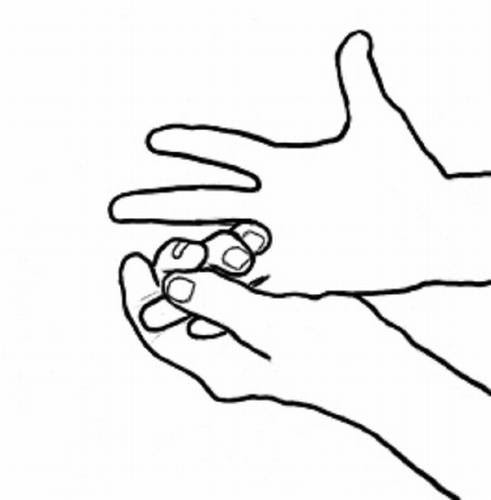
Keep your right palm facing up, draw your ring and little finger close together. Place your left thumb across the two fingers, gently wrapping your other four fingers around. Repeat on the left side.
Use: This is the perfect mudra for nervousness, or any worries to do with the heart. It is also an ideal hand gesture for people who tend to adopt a 'trying to' approach, or for individuals who sufferfrom depression.
4. Releasing general, daily fatigue
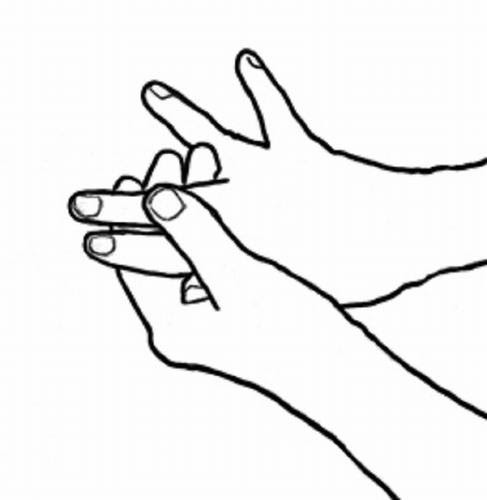
Place your right palm face down. Draw your thumb, index and middle finger close together. Place the thumb of your left hand over the three fingers, and wrap the rest of your fingers around.
Use: If you are the type of person who feels tired all the time then this mudra is for you. It is a great healing technique for individuals who feel insecure about their finances, work, relationships etc, and is just the thing to practice should you feel or look old. If you get irritated and angry over nothing, this is the mudra for you and it should also be applied by people who tend to worry a lot.

5. Total revitalization
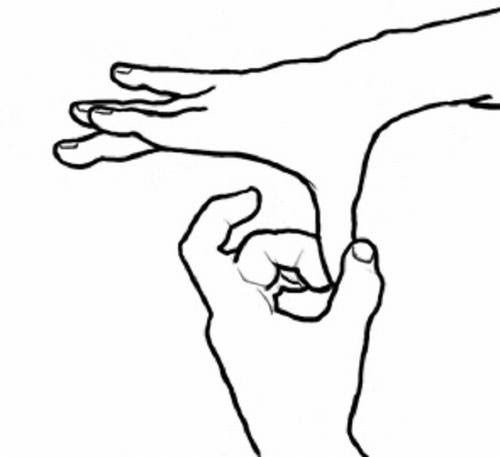
With your left hand make a circle with your middle finger and thumb (the palm side of the thumb should cover the nail of the middle finger, as illustrated in the diagram). Place your right thumb between the fingernail of your middle finger and thumb of your left hand.
Use: Whenever you have an uneasy feeling. It is also beneficial for anyone suffering from complexion problems, may be temperamental or has an uncontrollable craving for sweets.
6. Breathing easy
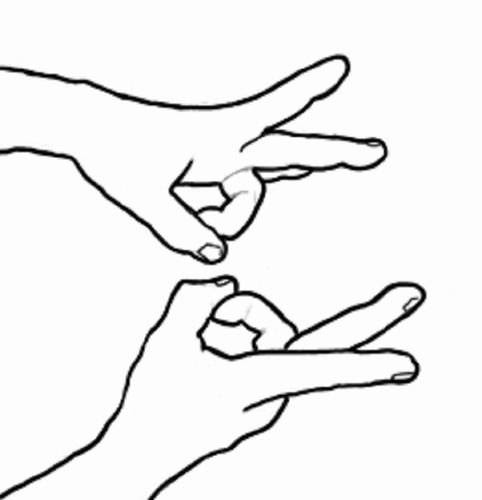
You may practice this mudra with both hands at the same time. Just cover your ring fingernails with the palm side of your thumb.
Use: This is the mudra to practice for anyone with bad skin conditions, or anybody who feels rejected and unloved and may tear up easily. It is also beneficial for anyone who's ears are bothering them.
7. Exhaling dirt, dust and grease
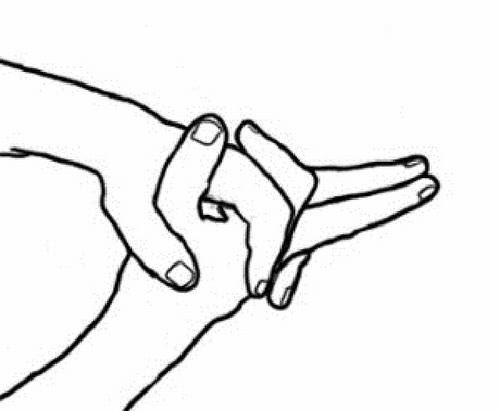
Interlock your fingers, extending your middle fingers on both the left and right hand. Both fingers should be touching.
Use: Practice this finger technique to harmonize the total mind/body.
8. Inhaling the purified breath of life
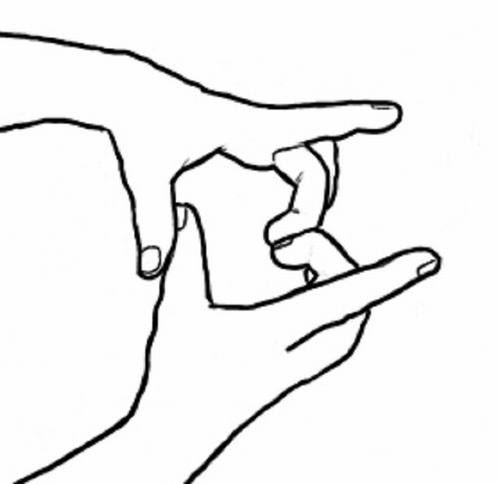
Simply touch the middle fingernails of both your left and right hand.
Use: This hand gesture is also used to harmonize the total mind/body.











































